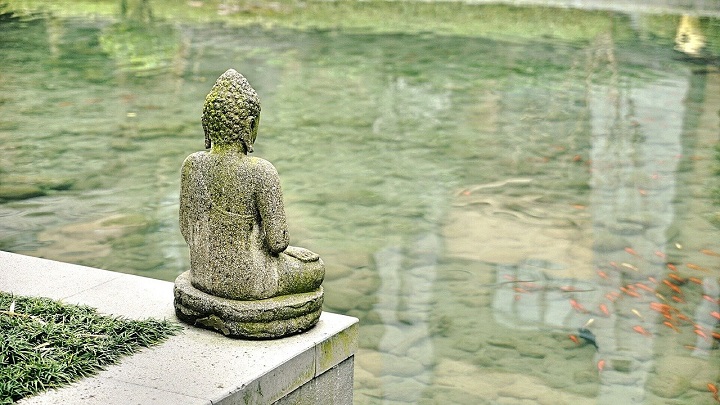Contrary to the European view that Buddhism is a unified trend, this is not entirely true. Like Christianity or Islam, Buddhism has several branches. Some originated in antiquity, others appeared later and interpret the ancient texts in a slightly different way. In this article we will try to understand these subtleties.
Buddhism is a world religion that originated in the 4th century B.C. in the northeast of what is now India; therefore it has a close connection with the ancient Indian philosophy. The number of its adherents exceeds 450 millions, and the main part of their number is concentrated in Asian countries: Vietnam, Thailand, Laos, Cambodia, Mongolia, Myanmar, Bhutan and Sri-Lanka. It is possible to become a Buddhist regardless of one’s previous faith, as well as one’s eye color, skin color, or class.
Directions
There are many schools of thought – on average, there are 18 of them. So, briefly about the main branches of Buddhism:
- Theravada. It is the oldest branch, the second largest in number. In the 21st century it has almost 40% of adherents.
- Mahayana or “Great Chariot”. Adherents make up the main mass, more than 50% of all Buddhists in the world. Centers are concentrated in Japan, Mongolia, China, Korea and Tibet.
- Vajrayana – “the Diamond Chariot”. Tantric branch, formed inside Mahayana (tantra is the most ancient self-improvement system, which helps to improve the body, extend the life, develop spirituality).
- The Tibetan branch (formed on the basis of Mahayana and Vajrayana) is the smallest in number (6%). The centers are located in Mongolia, Buryatia, Tyva, Kalmykia, Manchuria, and Northern China.
Some scholars believe that Buddhism has only three branches, while others speak of two main branches-the Theravada and the Mahayana.
Theravada
The teachings of the elders. Theravada is based on texts that were composed after the Buddha’s departure for nirvana. Adherents of this school believe that a lot of later teachings are innovations which distort the essence of Shakyamuni Buddha’s teaching, and in some cases contradict it completely.
Some apply the name Hinayana or Little Chariot to Theravada. This is not quite correct. Hinayana originated within Mahayana and literally means “inferior,” “narrow,” “despicable. However, to apply such “epithets” to the Teachings of the Elders, one of the oldest schools, is not quite correct.
Theravada is an ascetic school. It teaches to repeat the path of the Buddha in order to achieve nirvana. And that means you have to give up all earthly things, break up family ties. Ideally, it teaches to become a monk – that’s the only way to achieve true enlightenment.
Theravada is not a holistic doctrine. Its followers are plagued by doubts about the correctness of the Buddha’s texts. Because of this, in the course of its existence the school was divided into several religious-philosophical currents:
- the soundtantics;
- Vaibhashiki.
Theravada differs significantly from Mahayana, the “Great Chariot. Whereas the former emphasizes that one should follow the path of Buddha and attain nirvana, the latter says that one should help other people to achieve enlightenment and think of oneself last, because helping others is already part of the path to awakening.
True Buddhism is different from the rest of the world’s religions–there is no such thing as “God. Its founder, Siddhartha Gautama, is a real person. Through spiritual practices, he reached a state called nirvana. It is believed that if an ordinary person follows his path, he will be able to replicate it exactly.
Mahayana
It is often referred to as northern Buddhism. Mahayana has its origins in India, from where it spread throughout Asia to Nepal, Tibet, Korea, Vietnam, Mongolia, China and parts of Russia. Its emergence is attributed to the end of the first century B.C.
Mahayana is the opposite of Theravada. It features deification of Buddha as well as the theory of trinity, somewhat reminiscent of the Christian religion: Father, Son, and Holy Spirit, only in Mahayana this is called differently:
- The real person, Siddhartha Gautama, is a projection of God on earth (Sambhogakaya).
- The earthly body can take many forms. One of them is Amitaba, which people see, respect, and worship.
- Nirvana is attained by the essence or Dharmakaya, that which is the original source in the universe.
The basis of Eastern doctrine is the personal experience of a real person. Siddhartha Gautama’s knowledge of himself and the world was based not on religious dogmas, which are unproven and accepted only on faith, nor on mythical tales, but on what his own senses “tell” him. Those who study Buddhism in depth often refer to it not as a creed, but as a philosophy.
Vajrayana
The Tantric or Tantrayana (path of the Result) is the youngest of the major movements in Buddhism. It was formed in the 5th century A.D. as part of Mahayana. It is most wide spread now in Tibet, Mongolia, Nepal, Japan, some regions of Russia (Tyva, Buryatia, Kalmykia). Vajrayana followers have borrowed much from the teachings of the indigenous peoples of Tibet (Bon).
For Vajrayana followers, the personality of the Guru is very important. Only he can choose the right practice for the student.
Tibetan Buddhism
Another name is Lamaism. Based on the teachings of Mahayana and Vajrayana as well as Theravada (monastic vows). Here there is a complete preservation of late Indian Buddhism.
In Tibet this religious teaching did not begin to assert itself and develop until the 7th century A.D. The main difference from traditional Buddhism lies in the way in which authority, both secular and spiritual, is transmitted. In Tibet it took place as a reincarnation (tulku) of the same individual, while in other countries that practiced the same religion it was by inheritance or through the organization of elections. Eventually this led to the unification of the clergy and the secular authorities. The Dalai Lama became the unified ruler of Tibet.
